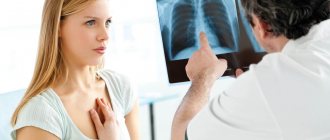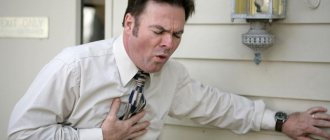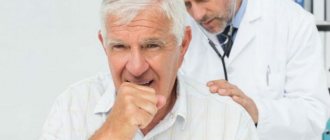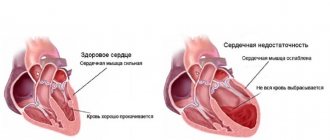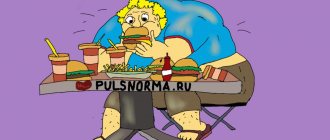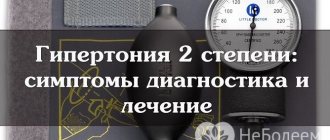Spasms in the throat cause feelings of restlessness and anxiety. The person's heart begins to beat actively and his breath is taken away. With this pathological condition, the muscles of the pharynx contract. As a result, the lumen narrows or is severely blocked. If the spasms are too strong, then inspiratory shortness of breath will soon appear. In frequent cases, this leads to complete closure of the lumen and death. To prevent a deterioration in your general health, you should consult a doctor in a timely manner.
Provoking factors
There are a number of reasons that can cause spasms in the throat. As medical practice shows, spasm is situational in nature and appears under the influence of the external environment. Sometimes spasms manifest themselves as a protective reflex of the body to injury or irritation. Often convulsive contractions are combined with the development of a serious disease in the body.
Among the main factors that cause breathlessness are:
- Getting large pieces of food or fish bones into the throat.
- The use of medications that are used to treat pathologies of the larynx or respiratory system.
- Contaminated air.
- Systematic exposure to toxic substances on the body.
- Allergic reaction.
- Severe nervous tension or stressful situation.
- Strong physical stress on the entire body.
These factors lead to severe weakness and exhaustion. Intense spasms of the throat provoke problems associated with breathing and swallowing. You need to be especially careful about your health if you regularly lose your breath.
Features of treatment
It is necessary to treat not the increased heart rate and shortness of breath, but the causes that cause these symptoms. The treatment regimen is drawn up depending on the underlying pathological process. Medications, physical therapy, and surgery may be required. It is necessary to combine the main course of treatment with lifestyle corrections and avoidance of irritating factors.
The following groups of drugs are used as symptomatic treatment:
- calcium channel blockers;
- diuretics;
- sedatives;
- adrenaline blockers;
- sartans.
Medicines can reduce nervous excitability, restore the usual heart rhythm, reduce myocardial oxygen demand and stabilize blood pressure. They should be used strictly according to the scheme drawn up by the attending physician. It is prohibited to use antiarrhythmic drugs on your own.
The combination of lack of air and rapid heart rate is most often a consequence of the influence of physiological factors. It is enough for the patient to avoid them to improve the condition. If the symptoms that arise appear against the background of pathology, then you will have to use therapeutic agents to eliminate them. Before starting a course of therapy, it is necessary to be fully examined to accurately determine the causative factor.
Source: MirKardio.ru
Symptoms of the disease
If you have diseases associated with the respiratory or cardiovascular system, the following symptoms may appear:
- labored breathing;
- severe pain in the chest area during inhalation and exhalation;
- problematic swallowing food;
- mucous discharge from the throat;
- pale and unhealthy skin tone.
If a healthy person experiences a spasm and it hurts to breathe, the symptoms disappear almost instantly and breathing is restored within a minute.
If the spasms intensify, then if you do not consult a doctor in a timely manner, additional symptoms arise in the form of:
- severe cramps that prevent you from moving;
- foaming at the mouth;
- sudden loss of consciousness.
Since the patient cannot breathe, this provokes disturbances in the functioning of the cardiovascular system. Only a doctor can determine the type of spasm after a thorough medical examination. If an external irritant (food, liquid, air or medicine) has entered the body, then this can be determined independently. In the event that spasms appear due to the development of serious pathologies, diagnosing the symptoms will help to find out the main cause of this condition.
Causes
Most often, respiratory tract neurosis actually occurs for psychological and neurological reasons (usually against the background of panic attacks and hysteria). But about a third of all cases of this disease are of a mixed nature. What other reasons can serve for the development of respiratory neurosis?
- Neurological diseases. If a person’s nervous system is already functioning with disturbances, then the emergence of new symptoms (in particular, neurotic shortness of breath) is quite likely.
- Diseases of the respiratory tract - in the future they can also develop into respiratory neurosis, especially if they have not been completely treated.
- History of mental disorders.
- Certain diseases of the digestive and cardiovascular systems can “imitate” hyperventilation syndrome, causing the patient to feel short of air.
- Some toxic substances (as well as medications, in case of overdose or side effects) can also cause symptoms of respiratory neurosis - shortness of breath, a feeling of lack of air, neurotic hiccups and others.
- The prerequisite for the occurrence of the disease is a special type of reaction of the body - its hypersensitivity to changes in the concentration of carbon dioxide in the blood.
Provoking factors
There are several diseases that cause discomfort in the throat. Eg:
- With sore throat, acute respiratory infections, laryngitis and pharyngitis, pain appears during inhalation and exhalation of air. The person has difficulty breathing. During the process of swallowing food, the patient feels severe discomfort.
- If spasms appear due to prolonged exposure to allergens on the body, then a sore feeling is felt in the throat. The patient is bothered by a severe cough. Mucus is released from the respiratory organs. My eyes are watering.
- In diseases that provoke disturbances in the functioning of the gastrointestinal tract, a person experiences heartburn and a feeling of heaviness in the stomach.
- When the thyroid gland is too enlarged, spasms sometimes occur. This phenomenon occurs when the disease is too advanced.
If spasms in the throat systematically appear, and they are combined with difficulty swallowing food, then this indicates the presence of a tumor disease. When problems arise in the functioning of the brain, sleep apnea often occurs in adults. This is a prolonged breath holding that causes feelings of anxiety and panic. If this happens, you need to stand up and try to take a deep breath. The main thing is to calm down and try to breathe evenly.
conclusions
Frequent heartbeat and difficulty taking a breath cause various illnesses and well-being. When you experience a feeling of tachycardia and shortness of breath at rest, or they are accompanied by dizziness or chest pain, you should consult a doctor and find out the cause of these complaints.
If the root cause of the disease is identified in time and treatment is started, complicated forms of pathologies can be avoided. Increased heart rate and shortness of breath interfere with normal lifestyle, increasing the risk of sudden death.
The following sources of information were used to prepare the material.
The causes of heart palpitations and shortness of breath do not have to be related to the heart or lungs. Sometimes the core of the problem lies in brain damage or changes in blood composition. If no action is taken, the clinical picture will worsen, which over time will lead to the development of various complications. The doctor must identify the causative factor, focusing on the patient’s condition and diagnostic results.
Disease research
If spasms appear systematically and a person cannot breathe, it is necessary to seek help from a specialist. Using laboratory and instrumental research methods, the doctor will establish a diagnosis. Based on the diagnostic results obtained, he will prescribe a comprehensive treatment taking into account the individual and physiological characteristics of the body. Self-medication is prohibited, as this can only worsen the situation. If you are short of breath (scientifically this phenomenon is called a lack of oxygen), then it is important to undergo a timely examination by a specialist.
Pathology can be diagnosed using:
- pharyngoscopy;
- smear for bacterial culture;
- endoscopy;
- fibroesophagogastroduodenoscopy;
- ultrasound examination;
- tests to determine the level of hormones in the body.
The choice of diagnostic method will depend on the form and nature of the pathology that develops in the body and led to the appearance of spasms.
Features of treatment
It is necessary to treat not the increased heart rate and shortness of breath, but the causes that cause these symptoms. The treatment regimen is drawn up depending on the underlying pathological process. Medications, physical therapy, and surgery may be required. It is necessary to combine the main course of treatment with lifestyle corrections and avoidance of irritating factors.
The following groups of drugs are used as symptomatic treatment:
- calcium channel blockers;
- diuretics;
- sedatives;
- adrenaline blockers;
- sartans.
Medicines can reduce nervous excitability, restore the usual heart rhythm, reduce myocardial oxygen demand and stabilize blood pressure. They should be used strictly according to the scheme drawn up by the attending physician. It is prohibited to use antiarrhythmic drugs on your own.
The combination of lack of air and rapid heart rate is most often a consequence of the influence of physiological factors. It is enough for the patient to avoid them to improve the condition. If the symptoms that arise appear against the background of pathology, then you will have to use therapeutic agents to eliminate them. Before starting a course of therapy, it is necessary to be fully examined to accurately determine the causative factor.
Source: MirKardio.ru
First aid
If it is painful for a person to breathe, it is important to provide timely first aid. When cramps occur, there are several ways to improve your overall health. Namely:
- provide complete rest to the patient;
- ventilate the room;
- use ammonia;
- give water to drink.
If none of the methods improves your overall health, then you need to give a gentle slap on the back. It is imperative to seek help from a specialist.
What diagnostics do you need to undergo?
If the patient notices the appearance of tachycardia and shortness of breath at rest or accompanied by other symptoms, you should consult a doctor as soon as possible.
The first thing the doctor will do is take a thorough history. It is important to find out under what circumstances the patient notices symptoms (physical activity, stress, rest), whether there is heart pain, cough, general weakness, whether the person is taking any medications. Next, the doctor examines the patient in detail, including a visual examination of the mucous membranes and skin, measures pulse, blood pressure, palpation and auscultation.
Laboratory tests include a general blood and urine test, blood biochemistry; from instrumental - ECG, X-ray of the lungs. If necessary, an additional ultrasound of internal organs is performed and a consultation with specialists is prescribed. A carefully collected anamnesis and a properly selected examination are the main conditions for making a diagnosis.
